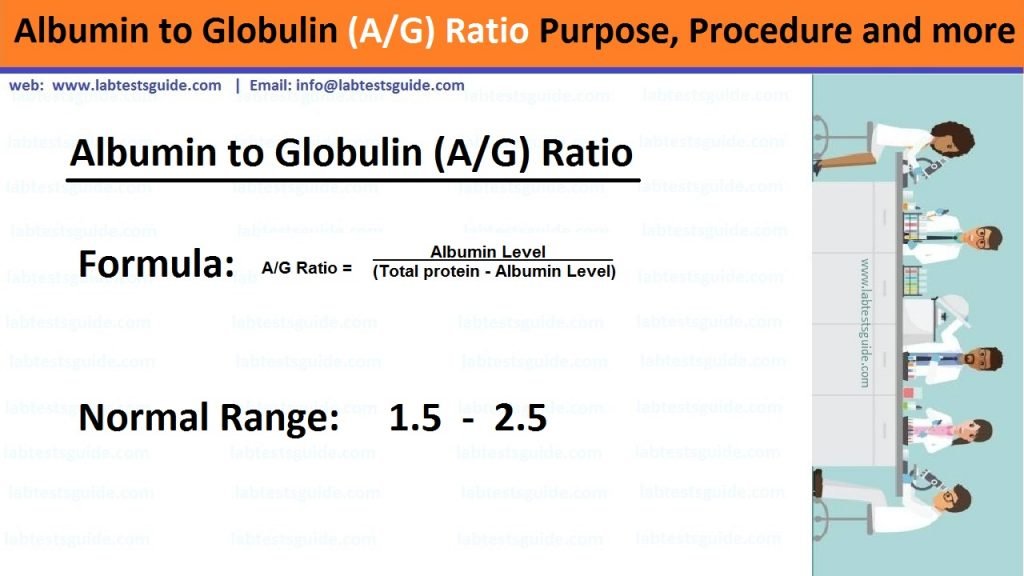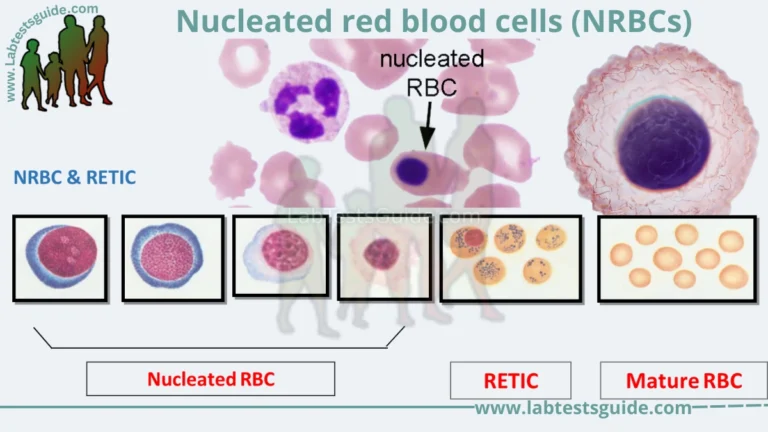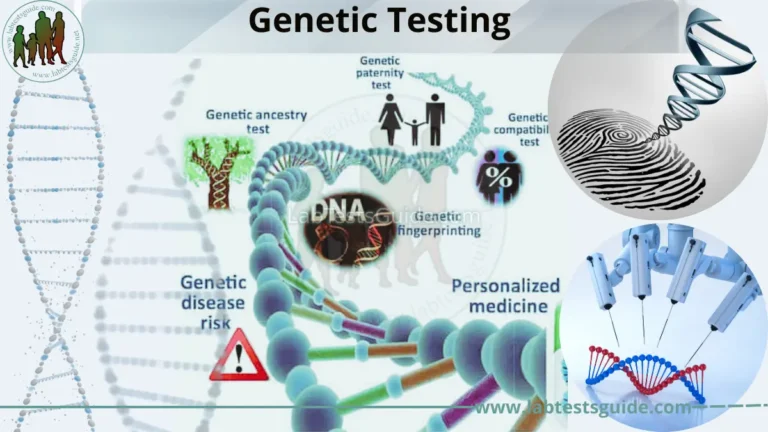The albumin/globulin ratio is the amount of albumin in the serum divided by the globulins. The ratio is used to try to identify causes of change in total serum protein. The albumin/globulin ratio is a calculated value. range if one component increases or decreases relative to the other.

Also Known as: A/G Ratio, Albumin/Globulin Ratio, A-G Ratio
Test Panel: Total Bilirubin, Conjagated Bilirubin, Unconjugated Bilirubin, ALT, AST, ALP, Total Protein, Albumin, Globulin, A/G ratio, GGT
Why Get Tested :
- Make sure you’re getting enough nutrition
- Screen for liver, kidney, or blood disease
- See if you’re at risk for an infection
- Find the cause for symptoms you’re having
When to Get Tested:
- When you have a routine health exam
- when you experience unexpected weight loss or fatigue
- when you could have symptoms of a liver disorder
- when you could have symptoms of a kidney disorder
Sample Required
- It is done on the serum of the patient.
- How to get good serum: Take 3 to 5 ml of blood in the disposable syringe or in vacutainer. Keep the syringe for 15 to 30 minutes at 37 °C and then centrifuge for 2 to 4 minutes to get clear serum.
- The random sample can be taken.
- Use a freshly prepared serum or store at 4 °C which may be stable more than 72 hours.
Precaution for Sample:
- Fasting sample is preferred.
- Specimen with lipemia or hemolysis should be avoided.
- Avoid prolonged tourniquet.
- Take into account physical exercise and fever where there is increased filtration.
Normal Values:
A/G Ratio: 1.5 – 2.5
A/G Ratio Test Procedure:
Calculation: A/G ratio= (Albumin Level)/(Total Protein – Albumin)
Example:
Total Protein = 7.8 g/dl
Albumin: 4.2 g/dl
Globulin: Total Protein – Albumin = 3.6 g/dl
A/G Ratio : Albumin/Globulin or Albumin/(Total Protein-Albumin) = 1.167
Albumin/Globulin Ratio Causes:
- Common Causes
- Increased albumin/globulin ratio is not a common finding
- Artifact: hemolysis resulting in increased albumin with some methodologies
- Uncommon Causes
- Increased albumin
- Hemoconcentration (rare without concurrent increase in globulins)
- Decreased globulin
- Neonates (failure of passive transfer of colostrum)
- Decreased production
- Severe combined immunodeficiency disease (SCID)
- Agammaglobulinemia, transient hypogammaglobulinemia
Home | Blog | About Us | Contact Us | Disclaimer
Possible References Used






